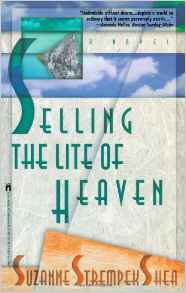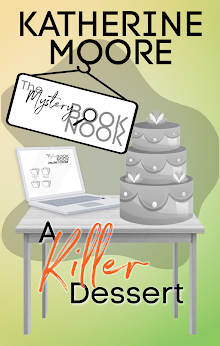Check out Selling the Lite of Heaven. It reminded me a lot of the movie Crossing Delancey with a bit of My Big Fat Greek Wedding thrown in. It's the story of a woman who's left at the altar by a man who has decided to become a priest and what happens when she tries to sell her engagement ring in the Pennysaver. (Nowadays, it would probably be CraigsList.)
The characters are very likable and relatable and if you generally turn up your nose at "romance novels," this is more like a lit fic read than, say, a Harlequin. I liked it a lot and think it would make a lovely small movie, character-driven and full of community color. You can find the book here.
Sunday, January 1, 2017
Wear Your Politics
I've never been much for wearing t-shirts with slogans (or putting them on bumper stickers either), but after the events of last year, I think it's important to make a stand in any and every way I can. It horrifies me to think that people might be afraid of me because so many women who look like me--white, middle aged--voted for hate and exclusion and racism and bigotry. A t-shirt with this graphic on it is my first purchase of 2017. I will be wearing it to the local anti-inaugural march. You can get yours here.
In Sunlight or in Shadow
A few years ago I participated in Brian Lindemuth's "Short Story a Day" challenge for a year. I discovered a lot of new writers that way and it also gave me an excuse to re-read short stories that I'd always loved. I'd like to read more short stories in the coming year and I'm going to start with this colleciton. I'm intrigued by the concept but look at the lineup of writers--Stephen King, Megan Abbot, Joyce Carol Oates, Craig Ferguson!!! In Sunlight or in Shadow is currently available in both digital and hard cover here.
Saturday, December 31, 2016
Mary Kubica's Don't You Cry
I read for a living and one of the best books I read this year is Mary Kubica's novel, The Good Girl. I LOVED it. And I am delighted that she's written a number of books I haven't read yet. First up on my TBR queue is Don't You Cry, a psychological thriller that critics have (perhaps inevitably) compared to Gillian Flynn's Gone Girl. I liked Gone Girl well enough but I guessed the twist right away and I really didn't care for any of the characters--didn't think they were sympathetic. On the other hand, I liked the people in The Good Girl.
Way to be presidential (Not)
Donald J. Trump
✔
@realDonaldTrump
Seriously--this is the man who's going to be president in three weeks?
#SAD
Happy New
Year to all, including to my many enemies and those who have fought me
and lost so badly they just don't know what to do. Love!
#SAD
Southern-fried fiction
I'm a fan of quirky stories about small Southern towns. I love Clyde Edgerton's work (particularly Floatplane Notebooks) and Eudora Welty's The Ponder Heart. One of my all-time favorite novels is Michael Malone's Handling Sin and another is Rita Mae Brown's Bingo (which I am dying to turn into a movie.)
I'm also a long-time fan of Fannie Flagg, whose book, Fried Green Tomatoes at the Whistle Stop Cafe was made into the movie with the abbreviated title Fried Green Tomatoes. (And how much did I love Kathy Bates in that movie?) She's got a new book out, The Whole Town is Talking.
Here's the sales pitch:
Elmwood Springs, Missouri, is a small town like any other, but something strange is happening at the cemetery. Still Meadows, as it’s called, is anything but still. Original, profound, The Whole Town’s Talking, a novel in the tradition of Thornton Wilder’s Our Town and Flagg’s own Can’t Wait to Get to Heaven, tells the story of Lordor Nordstrom, his Swedish mail-order bride, Katrina, and their neighbors and descendants as they live, love, die, and carry on in mysterious and surprising ways.
Lordor Nordstrom created, in his wisdom, not only a lively town and a prosperous legacy for himself but also a beautiful final resting place for his family, friends, and neighbors yet to come. “Resting place” turns out to be a bit of a misnomer, however. Odd things begin to happen, and it starts the whole town talking.
With her wild imagination, great storytelling, and deep understanding of folly and the human heart, the beloved Fannie Flagg tells an unforgettable story of life, afterlife, and the remarkable goings-on of ordinary people. In The Whole Town’s Talking, she reminds us that community is vital, life is a gift, and love never dies.
I'm also a long-time fan of Fannie Flagg, whose book, Fried Green Tomatoes at the Whistle Stop Cafe was made into the movie with the abbreviated title Fried Green Tomatoes. (And how much did I love Kathy Bates in that movie?) She's got a new book out, The Whole Town is Talking.
Here's the sales pitch:
Elmwood Springs, Missouri, is a small town like any other, but something strange is happening at the cemetery. Still Meadows, as it’s called, is anything but still. Original, profound, The Whole Town’s Talking, a novel in the tradition of Thornton Wilder’s Our Town and Flagg’s own Can’t Wait to Get to Heaven, tells the story of Lordor Nordstrom, his Swedish mail-order bride, Katrina, and their neighbors and descendants as they live, love, die, and carry on in mysterious and surprising ways.
Lordor Nordstrom created, in his wisdom, not only a lively town and a prosperous legacy for himself but also a beautiful final resting place for his family, friends, and neighbors yet to come. “Resting place” turns out to be a bit of a misnomer, however. Odd things begin to happen, and it starts the whole town talking.
With her wild imagination, great storytelling, and deep understanding of folly and the human heart, the beloved Fannie Flagg tells an unforgettable story of life, afterlife, and the remarkable goings-on of ordinary people. In The Whole Town’s Talking, she reminds us that community is vital, life is a gift, and love never dies.
Guest Post from Mark Rogers, author of Koreatown Blues
TITLE: Three Steps to KOREATOWN BLUES
By Mark Rogers
“As usual, I was the only white guy in the place.”
I had the first line of my crime novel KOREATOWN BLUES. From
there the writing flowed; a series of 1,000 word days and a first draft in two
months. But it took several steps to get to that first line.
#1
First, there was a solo stint in a one-room sublet in LA’s
Koreatown that went on much longer than originally planned. The room had one
window that looked out on a brick wall close enough to touch. I could stand it
for a couple of nights at a time and then I’d have to escape. I took to going
to a Koreatown nightclub a few blocks away. As far as I could tell the club had
no name, just a plastic sign out front that said “Wine Beer.”
Inside, the Korean regulars welcomed me and yes, I was the
only white guy, which was usually the case the months I frequented the club.
They handed me a microphone within minutes of my sitting down at the bar and like
that I was singing a karaoke version of “Yesterday.” Much like my protagonist
Wes in Koreatown Blues, I began dropping in most nights for a couple of Hite
beers and to sing a few songs.
My nights drinking beer and singing karaoke led to a
one-sided romance with a Korean barmaid (I held up my side) and lots of glimpses
into Korean culture. This served me well when I was writing KOREATOWN BLUES,
while research filled in the missing bits.
Some wild things never made it into the novel, like the guy
who insisted on playing the drums on my head with his chopsticks, until I raised
my fist and called him outside; or the Korean who sang an impassioned version
of the love theme from Titanic, “I Will Go On” and then at song’s end pulled
out an envelope from inside his shirt: X-rays showing his inoperable lung
cancer.
Labels:
#IAMWRITING,
Brash Books,
Bruce DeSilva,
Koreatown,
Mark Rogers,
Rudy Guiliani
Subscribe to:
Comments (Atom)











